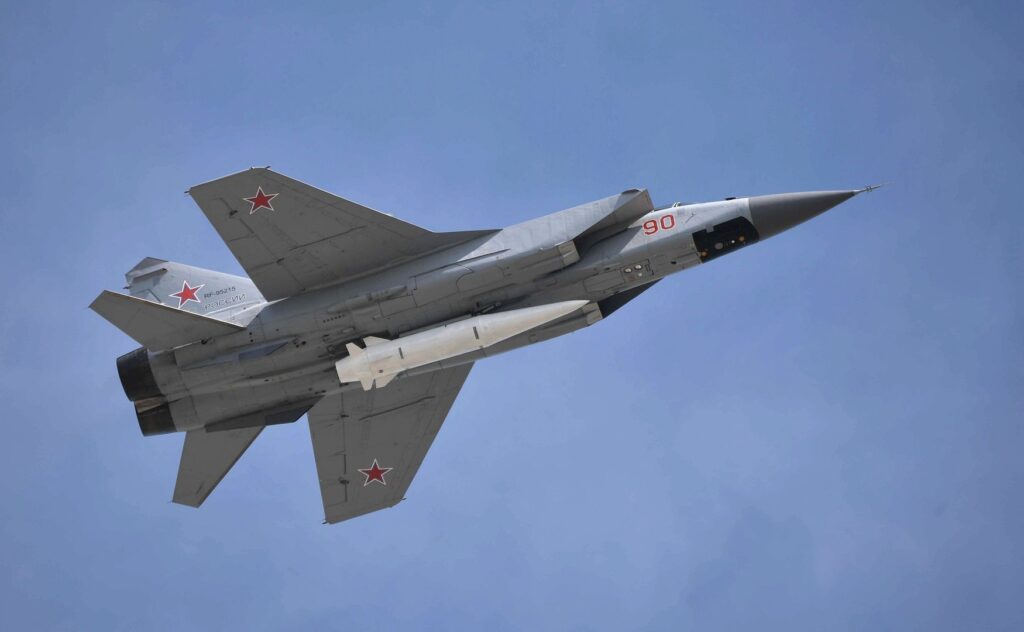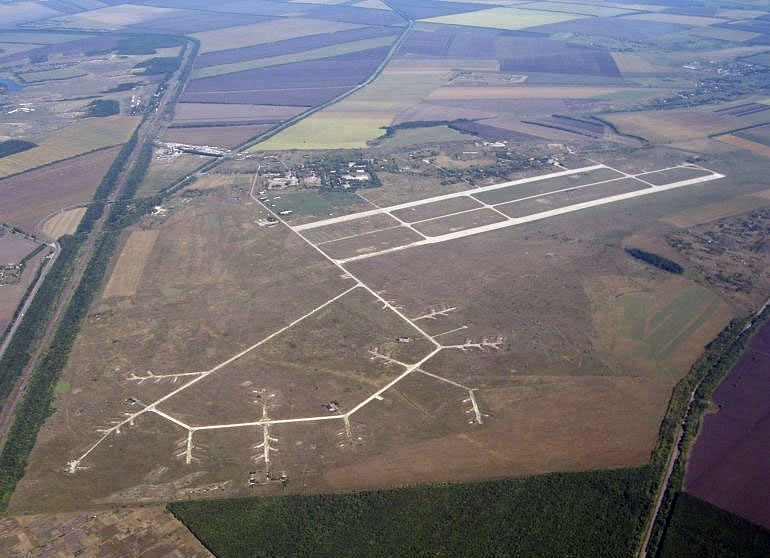No hits, no harm: Russia’s 5 July “hypersonic” Kinzhal strike on Ukraine bomber base fails

In the evening of 5 July, Russia launched two Kh-47M2 Kinzhal air-launched ballistic missiles targeting Ukraine’s Khmelnytskyi Oblast. The missiles, launched from a MiG-31K jet, caused explosions in the region but resulted in no damage or casualties, the Oblast Military Administration confirmed later the same day.
Missiles launched amid nationwide air raid alert
Ukrainian airspace monitoring channels reported the detection of Russian MiG-31K aircraft — Russia’s only Kinzhal carrier — at around 17:30. The alert triggered air raid warnings across the country.
Minutes later, at approximately 17:35 and 17:45, Ukrainian airspace monitoring channels reported the launch of two Kh-47M2 Kinzhal missiles.
According to Khmelnytskyi Oblast Military Administration chief Serhii Tiurin’s report at about 21:00, two Russian missiles caused no injuries or infrastructure damage. In a Telegram statement, Tiurin wrote:
“Today, during the air raid alert from 17:35 to 18:14, there was a Russian attack. Fortunately, there are no consequences — no casualties or destruction.”
The official did not specify if the Kinzhals missed their targets or were shot down.
Another take-off of the MiG-31K in Russia triggered one more all-Ukraine air raid alert at around 21:40, yet there were no launches.
On the morning of the same day – overnight on 4-5 July, Russia had already launched a massive drone assault on the same region, aiming again at Starokostiantyniv. Ukrainian air defenses intercepted 42 Shahed drones during that attack, as reported by national outlets.
Starokostiantyniv base remains key Russian target
The Ukrainian airfield in Starokostiantyniv, Khmelnytskyi Oblast, remains one of Russia’s persistent targets. Since the beginning of the full-scale invasion in 2022, Russian forces have repeatedly attacked the base with drones, cruise missiles, and hypersonic Kinzhals.

The apparent target of the 5 July missile attack was the Starokostiantyniv air base, known as the Kanatove Airdrome, home to Ukraine’s 7th Tactical Aviation Brigade, which operates Su-24M and Su-24MR bombers. Located in Khmelnytskyi Oblast, the base has frequently come under attack during Russia’s ongoing war against Ukraine.
Kinzhal performance doubts
The Kh-47M2 Kinzhal missile, touted by Russia as an unstoppable hypersonic weapon capable of speeds up to Mach 10, has seen repeated deployment in the Russo-Ukrainian war. First used in 2022, it was successfully intercepted for the first time in May 2023 following the deployment of MIM-104 Patriot systems. Ukrainian Patriot operators reported that the missile’s actual speed was closer to Mach 3.6 — much lower than Russian claims. Additionally, the Ukrainian military has stated that Kinzhal missiles often suffer from poor targeting accuracy, frequently missing intended targets.
Read also
-
Ukrainian drones hit Energia plant supplying batteries for Iskander and Kinzhal missiles
-
Russia targets Ukrainian air base. Ukraine downs almost all of 363 drones and 8 missiles
-
Russia kills civilians in central Sumy with Tornado-S cluster munitions. “Hypersonic” Kinzhal hits near Mykolaiv (updated)
-
Terror from the sky: a guide to Russian missiles used against Ukraine and how to stop them